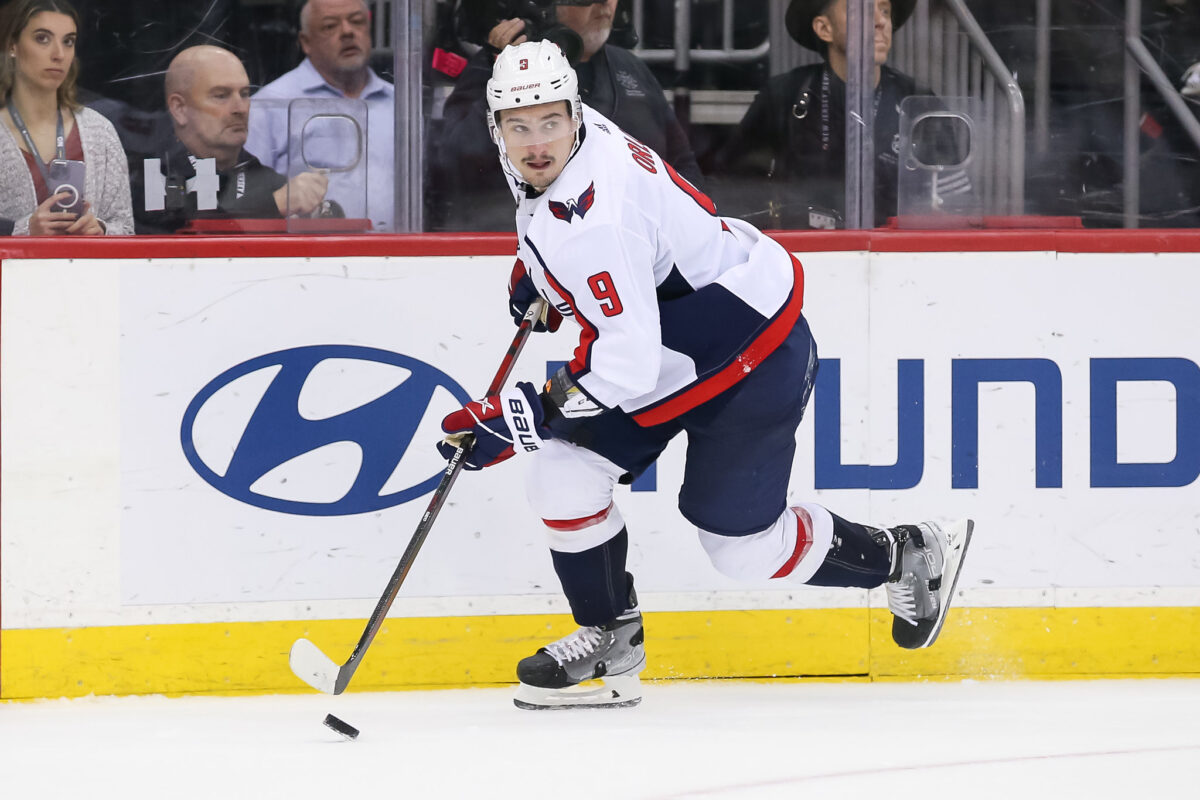The Boston Bruins are still the NHL’s best team by a wide margin through 59 regular season games. The only team in the league with over 40 wins, the Bruins are already just four wins away from the 50-win mark on the year. Their 97 points also puts them 11 points ahead of the second-place Carolina Hurricanes and means the Bruins can actually hit the 100-point mark prior to Friday’s Trade Deadline.

When trying to find faults with this team, many are left grasping at straws given how well-rounded and deep this Bruins team has proven to be over the course of the season. The second-highest scoring offense (222 goals compared to the Edmonton Oilers’ 232) and definitive top defense (126 goals against compared to the Hurricanes’ next-best mark of 151) has led to a goal-differential of plus-96. For reference, the next highest goal-differential in the NHL this season belongs to the New Jersey Devils at plus-51.
While the Bruins have been able to score at will this season, it’s been their defense that’s truly carried them to a different level.
The defensive play hasn’t come exclusively from defenders on the roster but from their two stout goaltenders in Linus Ullmark and Jeremy Swayman, as well as some of the best defensive forwards in the NHL. This has also been evident on the penalty kill as the Bruins have killed off 86.5% of their penalties in the 2022-23 season. A full team effort has helped the Bruins keep the puck out of their own net and it’s been an area they’ve hung their hat on all season long.
Bruins Must Balance Regular Season Success and Roster Health
Competing for first place in the NHL by season’s end is certainly one of the checkboxes on the Bruins’ to-do list, but it should never come at the expense of playoff success. It’s a fine line to balance. While the President’s Trophy and guaranteed home-ice advantage throughout the playoffs would be nice, the Bruins must also consider keeping players fresh down the stretch for their postseason run. Fortunately, the depth of this team means that both can be true with players having the luxury of taking shorter shifts or being subbed out of the lineup altogether.
This isn’t necessarily the primary reason head coach Jim Montgomery has run with a different starting defensive alignment in each of the team’s two games following their acquisition of Dmitry Orlov, but it’s at the very least a latent function that adds value to this team in the long run. By rotating players in and out and tinkering with pairings to start games and as contests go on, Montgomery gets to keep his players fresh, identify ideal partners and in general, maximize matchups by ensuring players are comfortable playing in different scenarios with different partners.
Related: Bruins History Suggests Sweeney’s Trade Deadline Work Not Done
It’s late in the season to be doing such experimenting, but that’s the cost of business when acquiring a player at the trade deadline. This is especially true when Orlov comes in as a bonafide top-four defender who has a plethora of experience playing on a top-pairing for a very successful team while also having the luxury of playing both the left and right sides effectively.
In Orlov’s first game with the Bruins, he would start on the team’s third-pairing alongside Derek Forbort with the team’s top four looking untouched and Connor Clifton taking a seat in the press box. In the second game of the Orlov era in Boston, Orlov would start the game alongside Charlie McAvoy on the team’s top-pairing with Matt Grzelcyk being taken out of the lineup and Clifton slotting back into his usual third-pairing role. This meant that Orlov had played both the right and left sides through just two games of action in Boston and averaged 19:41 of ice time with a staggering 71.4% of his shifts starting in the defensive zone. That zone-start percentage will normalize and Orlov will continue to get more comfortable with his new team, but the results have already left Montgomery and co. happy and that’s what matters.
What’s important to take away from this, though, is that the Bruins are comfortable moving players around as they need to and though there might be growing pains, the results haven’t taken a turn for the worse yet. This should further encourage Montgomery to keep tinkering, keep figuring out what options he has on defense and create gameplans around the best matchups with a bevy of options at his disposal.

The ideal setup for the Bruins in the playoffs will probably still look something like Grzelcyk and McAvoy, Hampus Lindholm and Brandon Carlo on the second pairing, Forbort and Orlov on the third pairing with Clifton and Jakub Zboril being used as extras. Still, there may be a matchup where Montgomery decides he wants to shift things and use Clifton or Zboril in place of a player like Grzelcyk or Forbort; all options are on the table and it’s hard to argue with anything Montgomery does this season given the way the Bruins have performed.
